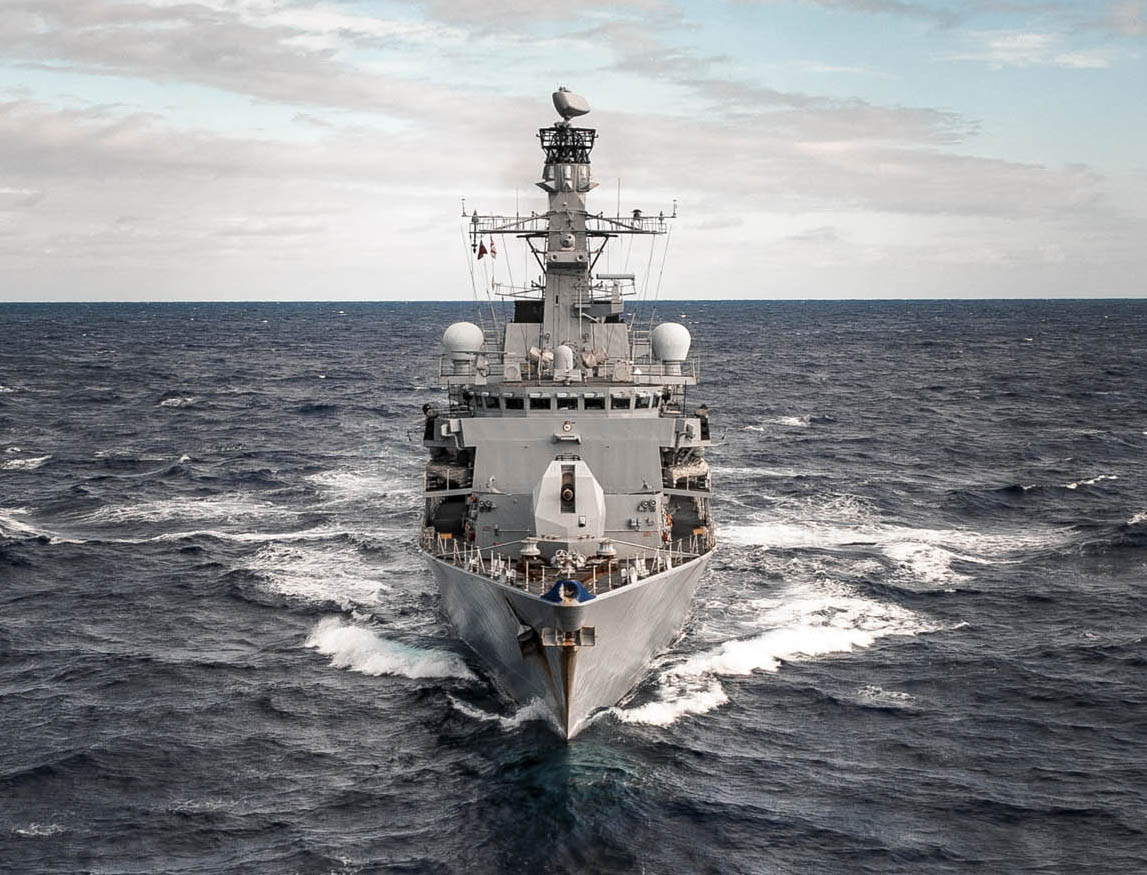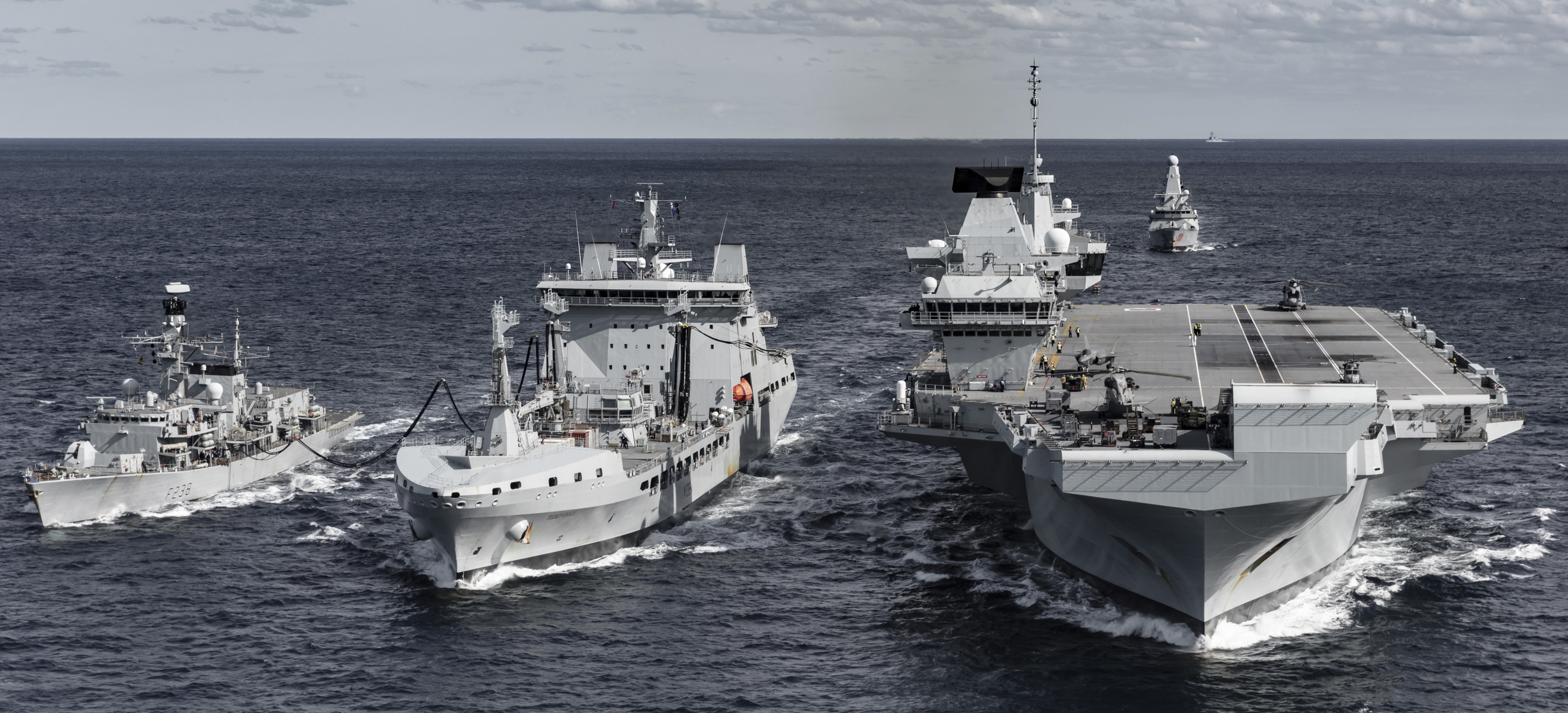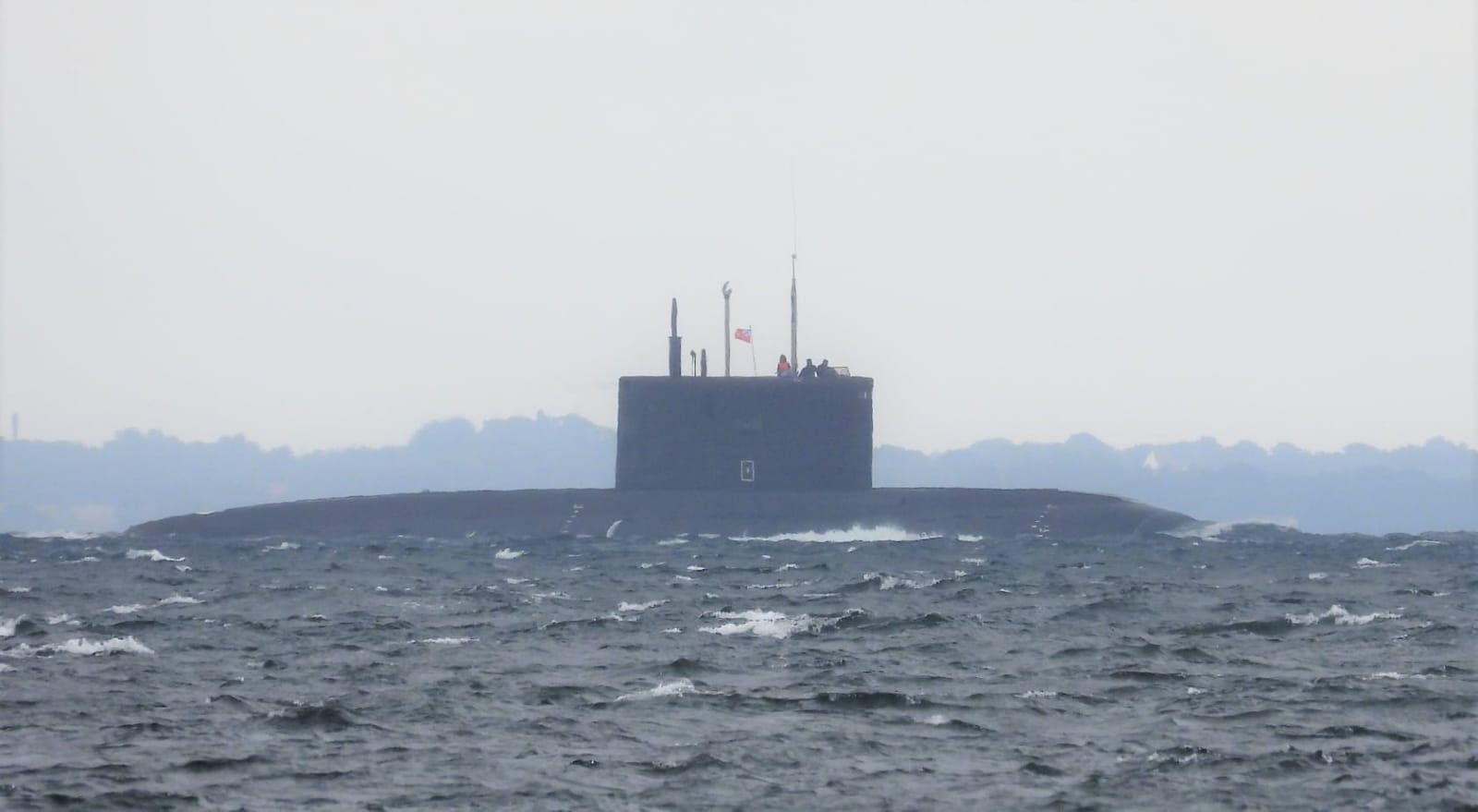A Russian submarine collided with a towed sonar array connected to the Royal Navy frigate HMS Northumberland during a patrol in 2020, the UK Ministry of Defence has confirmed. This is thought to be the first collision between Russian and British boats since the Cold War.
The collision was initially reported in a recent episode of Channel 5’s television show ‘Warship: Life At Sea’, which is currently in its third season. The show provides a rare behind-the-scenes peek into the daily operations of a Royal Navy warship.
The Russian submarine was reportedly hiding 200 miles north of Scotland when the crew of HMS Northumberland was deployed on a 48-hour mission to track it down, fearing it might try to tap into or damage vital communication and internet connections.
The Type 23 frigate of the Royal Navy headed into the region where the submarine was thought to be lurking and used its array sonar — a wire covered in hydrophones hauled along behind the hull — to listen for sounds from the submarine.
HMS Northumberland deploys her Type 2087 Towed Array Sonar during exercise #TridentJuncture
Yellow body is the Low Frequency Active Sonar (LFAS) transducer pic.twitter.com/yqIUUpOKYX
— Navy Lookout (@NavyLookout) November 5, 2018
However, in a “million-to-one chance event”, the submarine went precisely behind the British warship and collided into the sonar cable being dragged behind the frigate. According to a report from UK-based The Times, “Television footage captures the moment crew onboard HMS Northumberland sounded the alarm, shouting ‘what the hell was that,’ ‘shit,’ ‘what the f*** have I just hit’ as the boat crashes into its towed array sonar.”
“In late 2020 a Russian submarine being tracked by HMS Northumberland came into contact with her towed array sonar,” the UK Ministry of Defense said in a statement. “The Royal Navy regularly tracks foreign ships and submarines in order to ensure the defense of the United Kingdom.”

While physical contact between NATO ships and Russian warships was common during the Cold War, this is the first time a Royal Navy vessel has been involved in such an incident since the Soviet Union fell apart. Russian submarine operations in the North Atlantic and the North Sea have risen dramatically, increasing the likelihood of encounters with the Royal Navy.
Expanding Russian Presence In Northern Atlantic
HMS Northumberland is one of a handful of Type 23 frigates that received the enhanced Type 2087 towed sonar array a few years ago. It is capable of performing operations in active and passive modes. Thales manufactures it, and it’s intended to detect submarines before they get close enough to attack.
The incident went unreported at the time. When the incident happened, HMS Northumberland was assigned to Carrier Strike Group 2 for an exercise, and the Royal Navy said that the warship had visited three ports in Scotland, in a statement released in late 2020. Shortly before the collision, the frigate’s helicopter spotted the sub’s periscope on the surface, BBC reported.
The incident was confirmed after the US and the UK started spotting a considerable increase in Russian submarine activity in the North Atlantic. The Russian Navy has recently deployed a number of new, more sophisticated, and quieter submarines that are far more difficult to detect and track.

The Russian Navy possesses a diverse submarine fleet, including nuclear submarines with ballistic missiles. Some submarines, both nuclear and conventionally powered, are armed with anti-ship cruise missiles, while many are attack subs for undersea warfare.
Western military commanders have been closely watching Russia’s deployment of new Project 885 Yasen and Project 885M Yasen-M nuclear guided-missile submarines. Last year, General Glen VanHerck, the head of the United States Northern Command and the United States-Canadian North American Aerospace Defense Command, informed members of Congress that these boats were “on par with ours”.

In an interview with IHS Jane’s, Clive Johnstone, former Commander of NATO’s Maritime Command, claims the Alliance is seeing “more activity from Russian submarines than they have seen since the Cold War.” He further stated that the Russian submarines have also advanced significantly in terms of technical capabilities.
The Royal Navy had trailed a total of nine Russian vessels around the UK in only two weeks in the run-up to December 2020, Daily Mail reported. Moreover, Russia recently test-fired nearly 10 new Tsirkon (Zircon) hypersonic cruise missiles from a frigate and two more from a submarine.
This recent incident just compounds the Russian Navy’s growing presence in the northern Atlantic. It also emphasized the current risk of conflict between British and Russian Navy warships operating in the region.
- Contact the author at ashishmichel@gmail.com
- Follow EurAsian Times on Google News




